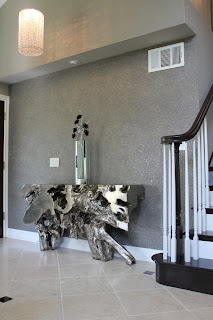By Joel MaKower Care Of Eco Committee
Reprinted by permission of GreenBiz Group Inc. http://www.greenbiz.com/
This article seemed like an interesting take on a ecologically relevant concept that we all hear thrown about. The Eco Committee decided to share the information with our readers. Enjoy!
The idea of calculating one's "footprint" began in the 1990s with the notion of an "ecological footprint," a measure of human demand on the Earth's ecosystems. In those terms, a footprint is a standardized measure of demand for natural capital relative to the planet's capacity to regenerate it. Organizations like the Global Footprint Network (whose founder, Mathis Wackernagel, helped popularize the concept) use footprint calculations to answer such confounding questions as "How many Earths would it take if everyone lived like us?"
Today, companies are conducting exercises to determine their carbon footprints, water footprints, toxic footprints, energy footprints, land footprints, even paper footprints. For better or for worse, "footprint" has become variously synonymous with "analysis," "impact," "measurement," or "consumption" -- or even "emissions."
This is largely a step forward, in that it shows that companies are taking stock of their environmental impacts, presumably with the intention of reducing them. While purists may scoff at the pitter-patter of little footprints, decrying them as a weak substitute for more holistic analyses, the talk of footprinting has become fashionable among companies. As "footprinting" becomes increasingly commonplace, however, the term is being used, and misused, in a growing number of ways. It's hardly a case of greenwashing -- that is, of knowingly misleading, either by omission or misrepresentation. But the term risks being rendered meaningless, thereby distorting what began as a useful scientific concept.
Carbon remains the principal focus of footprinting: an analysis of how much carbon is emitted in the making, or the use, or the life cycle of a product or service, or the operation of a building or company or some other entity or activity. In many companies, this leads to commitments to make reductions. For example, the North American arm of LG Electronics announced in late 2011 plans to halve its carbon footprint by 2020. Also last year, Verizon unveiled a carbon footprint metric to help the telecom giant track how efficiently it delivers data to its customers -- specifically, the amount of carbon dioxide emissions produced while moving a terabyte of data. Five major hotel chains -- Fairmont, Hyatt, MGM, Hilton, and Marriott -- joined forces to create a single methodology for measuring and communicating their carbon footprints.
Most such efforts dovetail with growing demands for corporate transparency of environmental impacts or emissions. There's not necessarily a legal mandate for companies to disclose such things, but a growing number are doing so, pushed by institutional investors, customers, activists, and others. In 2011, more than 3,000 companies, including more than 80 percent of Global 500 firms, voluntarily reported at least some of their carbon emissions, water management and climate change policies to the Carbon Disclosure Project.
Some carbon footprinting exercises seem, well, silly. Over the past year, we've learned the carbon footprint of unwanted emails (a.k.a. "spam") -- roughly 0.3 grams of carbon dioxide per message, in case you're wondering. (That, it turns out, is far more deleterious than the footprint of a tweet -- just 0.02 grams per 140 characters.) Kudos to those who take the time to calculate the various activities of our lives, for whatever it's worth.
To the extent that footprinting develops and propagates new methodologies that become standards within or among industries, such exercises stand to make a significant contribution. Case in point: More than 30 companies and organizations -- including Nike, Gap, Patagonia, and Walmart -- last year joined forces to create the Sustainable Apparel Coalition, with the first item on their agenda being the creation of a tool to measure the environmental impacts of clothing. Similarly, the Sustainability Consortium -- convened in 2009, initially by Walmart and now boasting a membership of nearly 80 retailers and consumer packaged goods companies -- has set out an ambitious agenda to create standards and tools to collaboratively develop life cycle–based standards and measurement tools for consumer products.
And then there's Puma, which raised the bar for such analyses by putting a dollar value on it impacts on nature. The shoe and sportswear company is measuring its use of ecosystems and plans to determine its economic impacts on ecosystem services, which is basically anything that nature provides: clean water, crops, soil formation, wildlife habitat, protection from storms, and the like. Puma's effort comes closest to the original notion of understanding one's full ecological impacts and, if emulated by others, stands to bring the idea of footprinting back in step with reality.





















